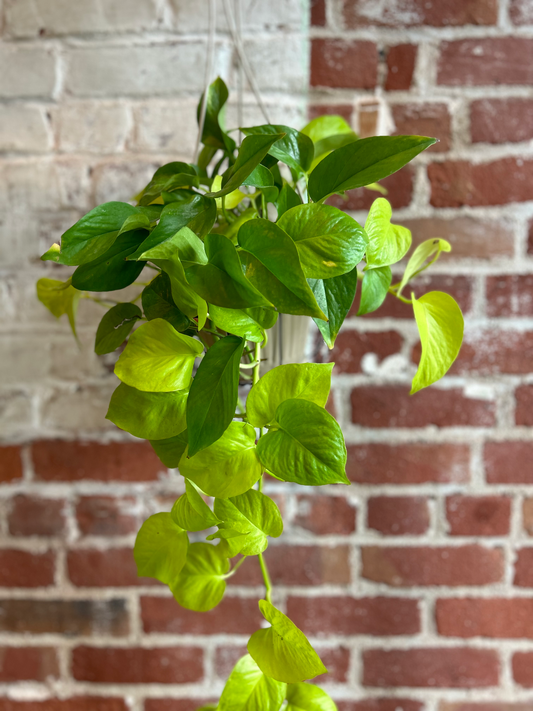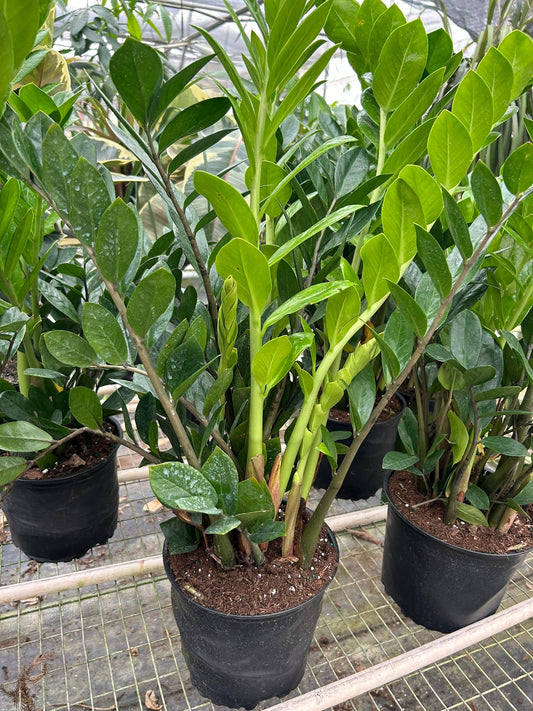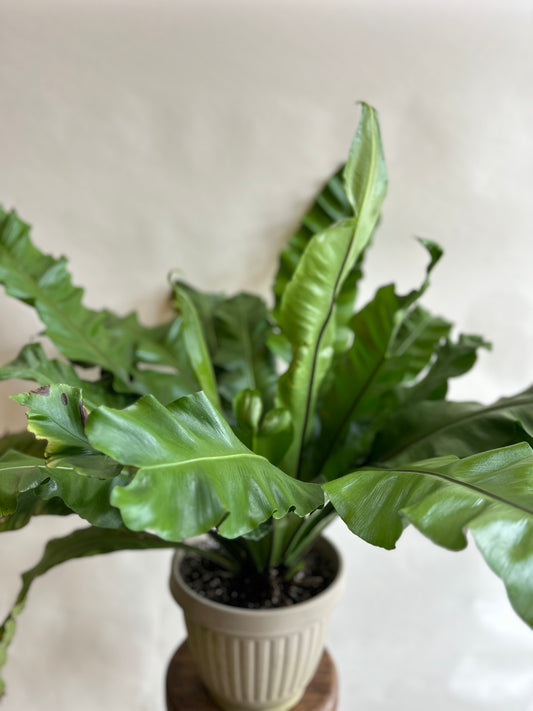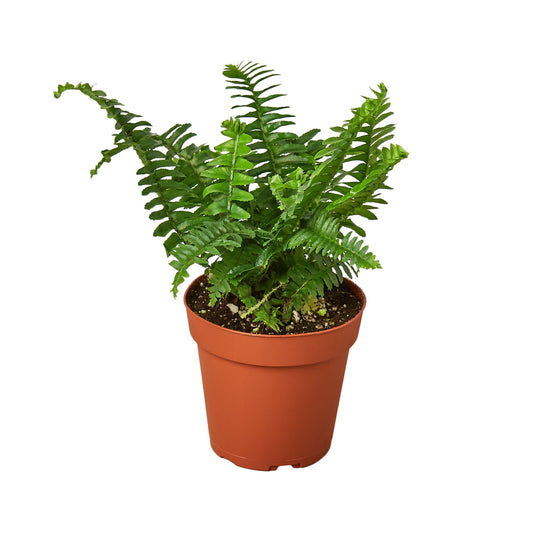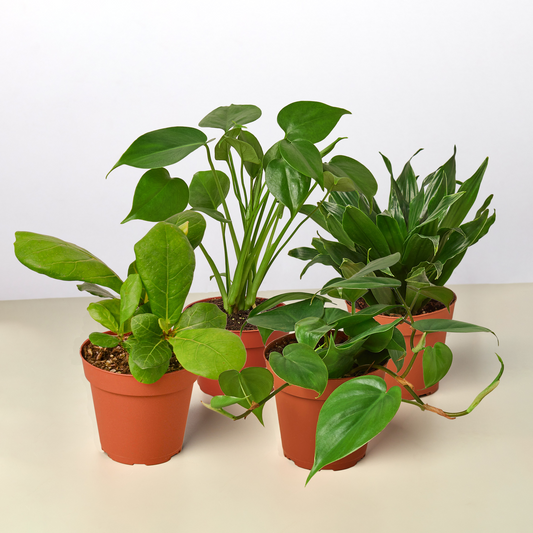Do You Need a Moss Pole For a Peacock Plant?
Cafe Planta Team
Have you ever found yourself wondering if your beloved Peacock Plant, with its stunning foliage, needs a moss pole for support? It’s a question that crosses the minds of many plant parents as they strive to provide the best environment for their green companions. The Peacock Plant, also known as Calathea, is admired for its vibrant, decorative leaves that can add a pop of color to any room.
This article will explore whether your Peacock Plant could benefit from the addition of a moss pole. We’ll look into the plant’s natural growth habits, the role of moss poles, and how this might (or might not) apply to your leafy friend. By the end, you’ll have a better understanding of your plant’s needs and how to keep it thriving.
Understanding the Peacock Plant
Before diving into the moss pole debate, it’s helpful to understand a bit about the Peacock Plant itself. Part of the Marantaceae family, Calathea plants hail from the tropical regions of the Americas. Known for their striking leaf patterns, which resemble a peacock’s feathers, these plants are a favorite among plant lovers looking to add a touch of the rainforest to their homes.
Peacock Plants are primarily grown for their foliage rather than flowers. Their leaves, which can feature intricate designs in shades of green, purple, and pink, make them stand out in any plant collection. They are also known for their unique behavior of folding up at night, a phenomenon known as nyctinasty.
In terms of growth habits, Peacock Plants tend to spread horizontally rather than climb vertically. This is a crucial point when considering whether they need structural support like a moss pole. Unlike vining plants, which naturally climb up supports, Peacock Plants may not require or benefit from the same arrangement.
The Role of Moss Poles
Moss poles are commonly used for plants that have a natural inclination to climb. These supports are typically made from natural materials like sphagnum moss, which provide both physical support and moisture retention. They are particularly beneficial for plants like Monsteras or Philodendrons, which have aerial roots that can latch onto the pole.
The primary function of a moss pole is to mimic the natural environment of climbing plants, giving them a surface to attach to as they grow upwards. By providing this structure, plant parents can encourage a more natural growth pattern and prevent their plants from sprawling uncontrollably.
However, not all houseplants are climbers. Some, like the Peacock Plant, grow in a bushier, more compact form. This difference in growth habit is a key factor in deciding whether a moss pole would be useful or necessary.
Assessing Your Peacock Plant's Needs
When deciding if your Peacock Plant needs a moss pole, it’s important to consider its individual growth habits. While some plants may benefit from additional support, others may thrive without it. Here are some questions to ask yourself:
- Is your plant showing signs of needing support? If your Peacock Plant is leaning or unable to support its own weight, it might benefit from some form of structural assistance.
- How is the plant growing? If it’s spreading outwards more than upwards, a moss pole may not be the best solution.
- Is the plant in a location with enough room to grow horizontally? If your space allows for it, letting the plant grow naturally without vertical support might be ideal.
Understanding these aspects of your Peacock Plant will help you make an informed decision about whether a moss pole is right for your plant.
When a Moss Pole Might Be Helpful
While Peacock Plants generally do not require a moss pole, there are situations where one might be beneficial. If your plant is exceptionally top-heavy or if you notice it leaning significantly, a moss pole could provide the additional support needed to keep it upright.
Additionally, if you’re experimenting with different plant arrangements or trying to create a more vertical garden, incorporating a moss pole could be an interesting design choice. However, this would be more for aesthetic purposes than necessity.
It’s also worth noting that using a moss pole can sometimes promote healthier growth by encouraging better airflow around the plant. This can help prevent issues like mold or mildew, especially in humid environments.
How to Introduce a Moss Pole
If you’ve decided that a moss pole is right for your Peacock Plant, the next step is to introduce it properly. Here’s a simple guide to doing just that:
- Choose the right moss pole: Make sure it’s tall enough to support your plant as it grows.
- Insert the pole: Carefully place the moss pole into the pot, taking care not to damage the roots. Position it close enough to the plant so that it can be easily attached.
- Attach the plant: Use soft ties or plant clips to gently secure the plant to the pole. Avoid tying too tightly, as this can damage the stems.
- Monitor growth: Keep an eye on your plant’s growth and adjust the ties as needed. You want the plant to be supported but still able to move slightly with natural growth.
Introducing a moss pole should be a gentle process that supports your plant without causing stress. Take your time and monitor how your plant adapts to its new support system.
Alternatives to Moss Poles
If you’ve decided against using a moss pole, there are other ways to support your Peacock Plant. For instance, consider using a simple stake or small trellis. These can provide the same benefits without the added bulk of a moss pole.
Another option is to allow the plant to grow naturally without support, especially if it’s in a space where it can spread out freely. This can create a lush, full appearance that highlights the plant’s striking foliage.
Ultimately, the choice of support (or lack thereof) depends on your personal preference and the specific needs of your plant. There’s no one-size-fits-all answer, so feel free to experiment and see what works best for you and your Peacock Plant.
Integrating Peacock Plants into Your Home Decor
Whether or not you use a moss pole, Peacock Plants can make a beautiful addition to your home decor. Their striking leaves can serve as a focal point in any room, adding color and interest to your space.
Consider placing your Peacock Plant in a decorative pot that complements its vibrant foliage. You can also group it with other plants to create a mini indoor jungle. This not only enhances the visual appeal but also creates a healthy environment for all your plants.
Additionally, the Peacock Plant’s preference for indirect light means it can be placed in various locations throughout your home. Whether it’s in a bright living room or a cozy bedroom, this plant can adapt and thrive as long as it’s not exposed to direct sunlight.
Common Care Tips for Peacock Plants
Regardless of whether you choose to use a moss pole, proper care is essential for keeping your Peacock Plant healthy and vibrant. Here are some general care tips:
- Watering: Keep the soil consistently moist but not soggy. Water when the top inch of soil feels dry to the touch.
- Light: Provide bright, indirect light. Avoid direct sunlight, which can scorch the leaves.
- Humidity: Peacock Plants thrive in high humidity. Consider using a humidifier or misting the plant regularly.
- Feeding: Use a balanced, water-soluble fertilizer every month during the growing season (spring and summer).
By following these care tips, you can ensure that your Peacock Plant remains healthy and beautiful, regardless of whether it has a moss pole for support.
Final Thoughts
To wrap things up, Peacock Plants typically don’t require a moss pole because of their growth habits. However, if you find your plant needing some support or want to try something new with your plant decor, a moss pole can be a creative choice. Remember, each plant is unique, so listen to what yours might need.
At Cafe Planta, we're passionate about helping you care for your plants. Whether you're searching for a new addition to your collection or need some advice on plant care, we've got you covered. Feel free to email us for any inquiries or connect with us on Instagram. We're here to support your plant journey and help you create a vibrant, green sanctuary at home.


